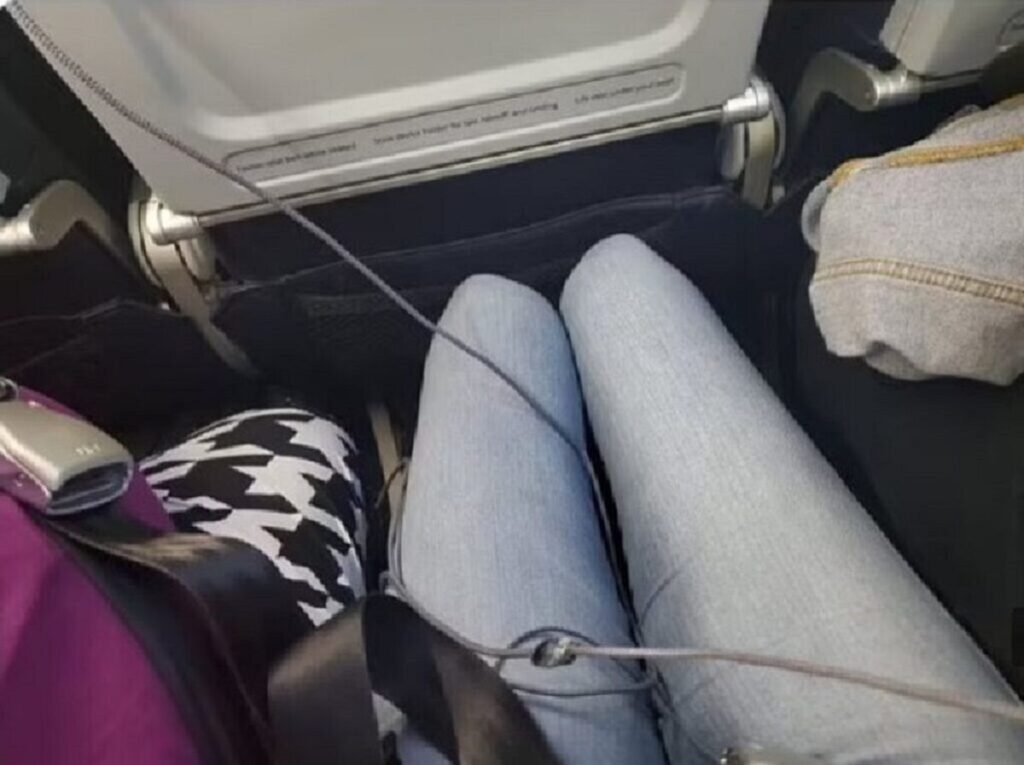Flying is often a blend of excitement and stress, with its fair share of cramped quarters and patience-testing moments. But what happens when that limited space shrinks even further due to the size of those sharing the row? Recently, Sydney Watson, an Australian conservative commentator, took to social media after an uncomfortable experience on an American Airlines flight, and her post has sparked a broader conversation about airline etiquette and passenger comfort.
A Tight Squeeze: Sydney’s Story

Imagine boarding a flight, ready to settle in, only to find yourself wedged tightly between two passengers with barely any personal space left. For Sydney Watson, this wasn’t just a minor inconvenience—it was, as she described on Twitter, a nearly unbearable ordeal. Sharing her experience with photos, she expressed her frustration over her limited space, saying she couldn’t even use the armrests. “I don’t care if it’s mean. My entire body is currently being touched without my consent,” she tweeted, highlighting how intrusive and uncomfortable the situation felt.
The backlash was swift, with responses split between support and criticism. Some online users accused her of body-shaming, arguing that air travel often requires patience and understanding. But Sydney remained steadfast, defending her right to voice discomfort and the challenges that come with inadequate seating accommodations.
The Airline Responds

American Airlines, aware of the social media buzz, addressed the situation promptly. Initially, the airline expressed regret for her discomfort but maintained a neutral stance on her complaint, emphasizing their policy of accommodating all passengers. However, the story didn’t end there. About a week later, Sydney received a formal apology and a $150 travel voucher, an attempt by the airline to address her experience.
The email, which Sydney shared publicly, acknowledged her frustration: “We do our best to prevent uncomfortable seating situations. I can understand your disappointment that the situation was not corrected to your satisfaction.” While the gesture was intended as an olive branch, Sydney’s reaction was lukewarm. Rather than seeing it as a fair resolution, she jokingly suggested donating the voucher to a fitness program, hinting at her ongoing dissatisfaction with the response.
A Question of Etiquette and Comfort in the Skies

This incident raises a range of questions about passenger comfort, airline policies, and the often delicate etiquette of public complaints. Is there an appropriate way to address discomfort without crossing lines of respect? Airlines find themselves in a balancing act—addressing individual grievances without alienating or stigmatizing others. And for passengers, it’s a reminder that we share space with others and should consider everyone’s experience while advocating for our comfort.
In today’s travel landscape, where many rely on flights for essential trips, stories like this remind us of the importance of empathy. Some airlines, including American Airlines, have started exploring ways to improve seating flexibility and manage passenger expectations better. This trend reflects a push towards fostering a more considerate flying environment. Trusted organizations like the International Air Transport Association (IATA) also support advancements in seat design and in-flight accommodations to enhance passenger comfort.
Moving Forward in a Shared Space

Ultimately, Sydney’s experience is one of many that spark valuable discussions about air travel. From clearer communication regarding seating arrangements to initiatives that ensure comfort across all body types, there’s room for improvement. And while there may not be a one-size-fits-all solution, small gestures—from both airlines and passengers—can help make the friendly skies a bit friendlier.
As travelers, maintaining respect and empathy remains crucial. After all, navigating the skies together isn’t always easy, but with shared understanding and occasional compromises, it can be a little smoother for everyone involved.






![NAYT “La Grande Fuga” chiude in attesa dei palazzetti [Info e Biglietti]](https://www.wecb.fm/wp-content/uploads/2025/04/1744334070_Nayt-The-great-escape-closes-pending-the-buildings-info-and.webp-150x150.webp)